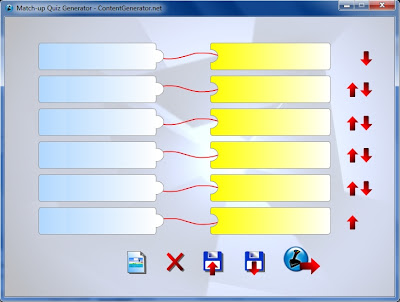This lesson has been inspired by Ceri Jones' presentation in IATEFL Brighton 2011, or rather her interview, as I wasn't present in the conference, and her session wasn't recorded. For those of you who would like to watch the recorded interviews or sessions, they are available here:
http://iatefl.britishcouncil.org/2011/.
Ceri's idea is basically to start off with a close-up. Speak about this, and gradually, extend the conversation away from the close-up, as though you're zooming out of the image. Ask questions based on the five senses: sight, hearing, touch, smell, taste. I would recommend that you look at
her blog to read about her ideas of using images in the classroom.
Although Ceri's idea is just to use the close-up, and that may be sufficient if you have a participative class, you may have to feed your class with parts of the wider image if imagination is lacking in an uninspired group. If you use a high-resolution image, you can start off by zooming in to the section you would like to start off with. Prepare this beforehand since it is better if no-one knows what the 'bigger' picture is to keep the element of surprise alive.
In any case, you should always run through your images before a lesson. I, personally, prefer shots which are slightly underexposed, but these may appear too dark in the class or some pictures may appear too bright. So, be prepared to make minor adjustments to adapt the images to each class.
Here, then, is a close-up image.
![]()
Ask them what the picture is. They may or may not be able to guess. If no-one is able to guess, show them the following image, or perhaps, give a few hints.
When they've guessed that it's an eye, here are some examples of questions you could ask:
Is it real?
Is it a photo or a painting?
Is it of a man, woman, or an animal?
What kind of animal? / Is the man handsome? /Is the woman pretty? (Here, you can elicit descriptive adjectives - height, weight, type of hair, complexion, etc).
The idea is to remain flexible; the goal is to get all the students to speak. If they are on a roll, don't stop them. You don't have to show the zoomed-out images.
Are they painted by a male or a female? Age? Are the subjects real of imaginary? Are the paintings side by side? Are they of a male or female? Imagine their hair, their mouths...
At this point, they are likely to have guessed that these are graffiti.
Discuss:
Are they a valid art form? Do you like them? Should they be controlled? Where should they be allowed/not allowed? How should offenders be punished? What type of people paint them?
You can branch out to general art. Do you like art? What kind? Do you draw/paint well? Who draws well? Have they got any work of their own to show the class?
So, are the two girls drawn side by side? What about the old lady (well, maybe it isn't an old lady; anyway, I'm referring to the figure in the background)? Are they all drawn by the same person? What makes you think so? Where do you think these graffiti are? Why do you think so?
If they haven't guessed already, now they should know that this is a skate park. At this point, whether you've arrived here just by using the first shot, or you've needed to use all the zoomed-out shots, you can start to discuss sports in general, and skateboarding, in particular.
What sports do you practise? How often? Who with? How many? Where? How long? What type of clothes do you wear? Do you have a break? How long? What do you do? What do you do after? Do you
chill out somewhere with your friends? Where? What do you talk about?
If they go somewhere to eat/drink - what do you eat/drink? If this subject comes up, you can start to talk about food (remember the five senses). Examples: What's your favourite food? Describe it: colour, texture, taste, smell. Why do you like it? How often do you eat it?
What's your favourite meal time? Do you cook? Who cooks at home? Do you eat healthily? What is healthy food?
Why is there a fence covering the park? What is beyond the park? What is on this side? What's to the left/right? What time of day is it? How do you know? Do you think it gets busy?
Is this picture taken at the same time as the previous? Is this skate park in a city or in a village? What's the weather like?
As you can see, there are endless questions you can ask, and endless topics you can get the students to talk about. If there are too many students in the class, you can split them into groups and have them ask each other questions. Go around monitoring and helping.
Do visit
Ceri's blog for more ideas on using images. For sources of image, look at my
Useful Resources page, under Images. You can, of course, use our very own
ELTpics in Flickr. There, you'll find photos taken by teachers for teachers under the Creative Commons licence. You can also join in the fun by contributing your own photos: tweet the link with the hash tag #eltpics.
Photos are invited for a new topic each week (normally on Sunday). If you don't know the topic, just ask the question with the hash tag, and someone will tell you. You can also contribute photos to older topics - just look at the sets page.
Related topics






















